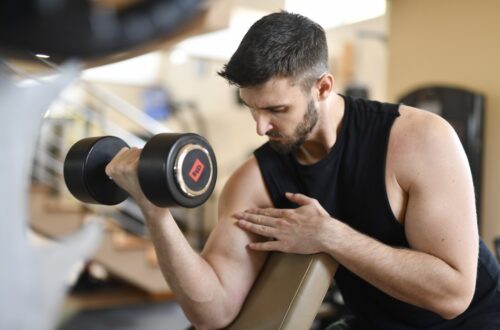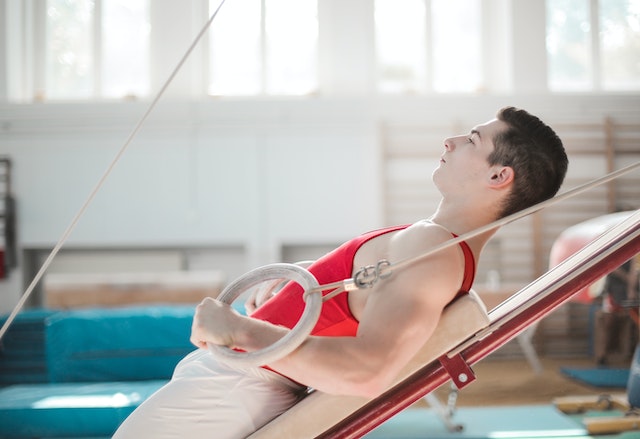
7 Ways Pilates Can Keep You Injury-Free During Exercise
Pilates is a dynamic form of exercise that helps you build strength, and flexibility, and improve your overall fitness. It is a popular form of exercise for injury prevention and recovery, as it emphasizes proper alignment and body mechanics, which can help prevent future injuries.
Injury prevention is a key benefit of practicing Pilates. The exercises are designed to improve posture, balance, and stability, which can help reduce the risk of injuries during other physical activities.
By strengthening the core muscles, Pilates helps to support the spine and improve overall body alignment, reducing the strain on joints and muscles.
Furthermore, Pilates is also beneficial for those recovering from injuries. It is a gentle form of exercise that can be adapted to meet the needs of individuals with various injuries or health conditions.
Pilates also helps strengthen and rehabilitate injured muscles, improve range of motion, and speed recovery.
In today’s blog, let’s explore the following seven ways Pilates can protect your body while you exercise.
Seven Ways Pilates Can Help Safeguard Your Body During Exercise:
1. Core Stabilization:
The core muscles play a vital role in providing stability and support to the spine and pelvis. Pilates focuses on the core muscles, which include the abdominal muscles, lower back muscles, and pelvic floor muscles.
By strengthening these muscles, Pilates helps stabilize the spine, improving its ability to withstand the demands of other exercises and reducing the risk of strain or injury.
2. Improved Posture:
Poor posture not only affects how you look but can also lead to imbalances and an increased risk of injury during exercise. Pilates exercises focus on spinal alignment, shoulder stability, and proper body mechanics.
Through a series of controlled movements, Pilates helps you develop better posture and alignment, reducing stress on joints, muscles, and connective tissues.
By correcting imbalances and promoting good posture, Pilates decreases the risk of injuries caused by poor alignments, such as muscle strains, joint pain, and overuse injuries.
3. Increased Flexibility:
Flexibility is crucial for preventing injuries, as tight muscles and a limited range of motion can lead to strains, sprains, and muscle imbalances. Pilates incorporates stretching exercises that target various muscle groups, promoting flexibility and joint mobility.
Through controlled movements and focused stretching, Pilates helps lengthen muscles, release tension, and improve overall flexibility.
Improved flexibility allows your body to move more efficiently, reducing the likelihood of muscle imbalances and injuries.
4. Body Awareness:
Pilates encourages mindful movement and body awareness. Each exercise is performed with precision and control, emphasizing the mind-body connection.
By focusing on the sensations and alignment of your body during Pilates, you develop a deeper understanding of how your body moves and functions.
You can recognize imbalances and compensatory patterns and correct them thanks to your increased awareness, which lowers your risk of injury from improper movement.
With increased body awareness, you can make adjustments in real time, ensuring safe and proper form during exercise.
5. Balanced Musculature:
Many injuries result from muscle imbalances, where certain muscles are overactive and others are underactive. Pilates aims to create a balanced musculature by targeting both the larger and smaller muscles of the body.
Through a variety of exercises, Pilates promotes balanced strength and flexibility in all muscle groups, improving overall muscle function and joint stability.
This balanced development enhances biomechanics and reduces the risk of overuse injuries associated with muscle imbalances.
6. Pilates can be customized for specific activities
One of the great things about Pilates is that it can be customized to meet the needs of specific activities. Whether you’re a runner, a cyclist, or a dancer, there are Pilates exercises that can help improve your performance and reduce your risk of injury.
For example, Pilates exercises that focus on hip mobility can be particularly helpful for runners, while exercises that focus on shoulder stability can be helpful for swimmers.
7. Pilates can improve overall fitness
Finally, Pilates can improve your overall fitness, which can also contribute to injury prevention. By improving your strength, flexibility, and balance, you’ll be better prepared for physical activity in general. This can help you avoid injuries and enjoy your favorite activities for longer.
In conclusion
Pilates is a highly effective form of exercise that can have numerous benefits for injury prevention and recovery, as well as overall fitness and well-being.
By focusing on proper alignment, body mechanics, and mind-body connection, Pilates can help individuals improve their posture, balance, stability, and range of motion.
Moreover, it is a gentle and low-impact form of exercise that can be modified to meet the needs of individuals with various injuries or health conditions.
If you are looking to improve your fitness or prevent injuries, Pilates is definitely worth exploring.


You May Also Like

The Science Behind Muscle Gain: What You Need To Know
15 November 2023
Weight Lifting for Seniors: Stay Strong and Active as You Age
26 May 2024

